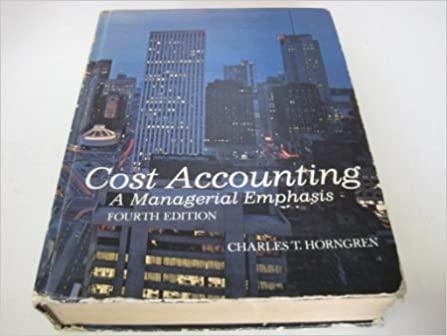Sensitivity Analysis, Payback Reciprocal The All Directions Railroad is considering the replacement of an old power jack
Question:
Sensitivity Analysis, Payback Reciprocal The All Directions Railroad is considering the replacement of an old power jack tamper used in the maintenance of track with a new improved version that should save $5,000 per year in net cash operating costs.
The old equipment has zero disposal value, but it could be used indefinitely. The estimated useful life of the new equipment is 12 years and it will cost $20,000.
- Payback time.
- Internal rate of return.
- Management is unsure about the useful life. What would be the internal rate of return if the useful life were
(a) 6 years instead of 12, and
(b) 20 years instead of 12?
- Suppose the life will be 12 years, but the savings will be $3,000 per year instead of $5,000. What would be the rate of return?
- Suppose the annual savings will be $4,000 for 6 years. What would be the rate of return?
- Professor Myron Gordon has pointed out that the payback reciprocal can be a crude approximation of the true rate of return where
(a) the project life is at least twice the payback period, and
(b) the cash earnings or savings are uniformly received in equal amounts throughout the investments life. The payback reciprocal, using the original data, will be $5,000 + $20,000, or 25 percent.
a. How close is this to the internal rate of return?
b. Compute the payback reciprocals for 3
(a) and 3(b). How close are they to the internal rates of return?
c. Compute the payback reciprocals for (4) and (5). How close are they to the internal rates of return? L01
Step by Step Answer:






